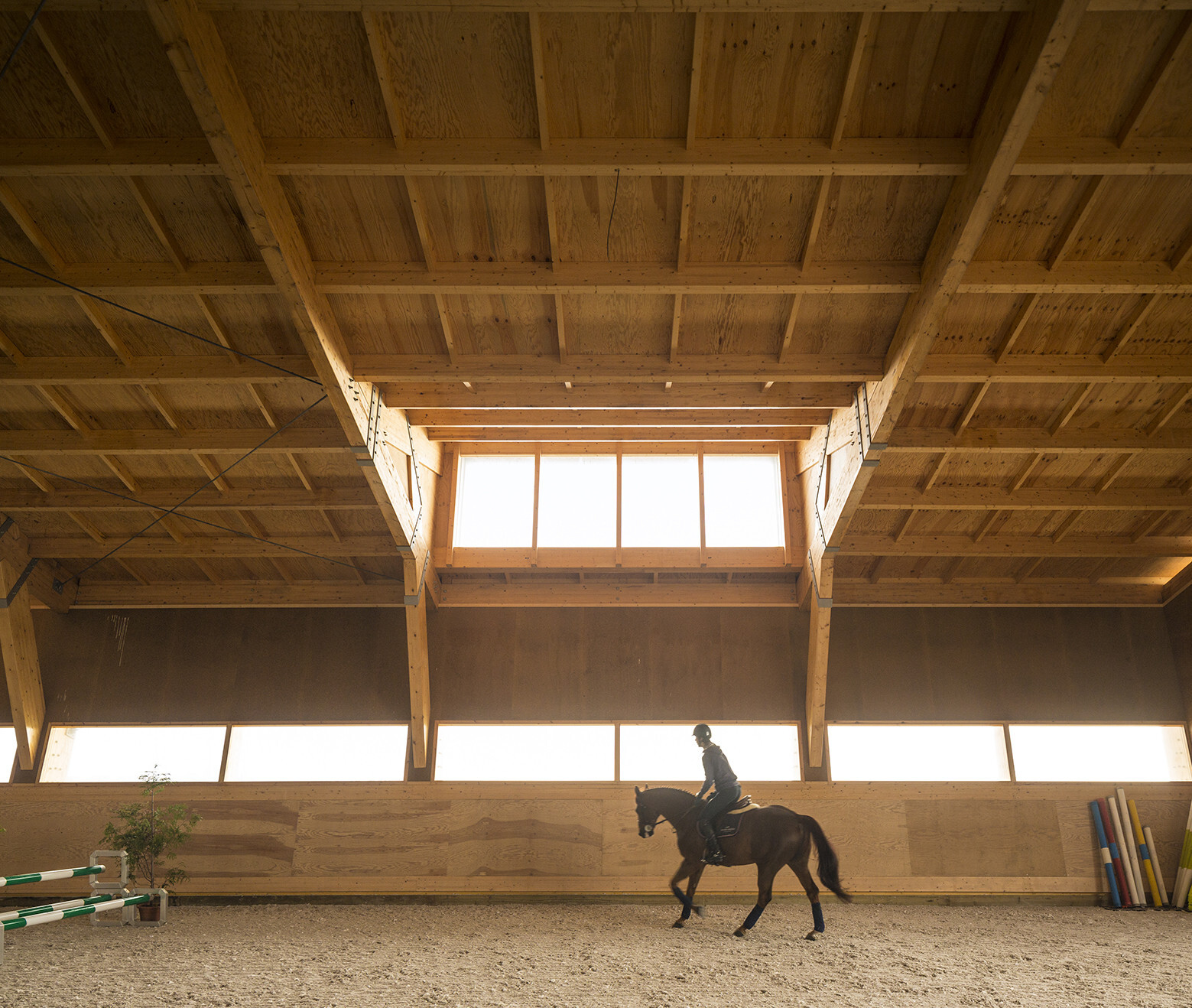
"Few commissions allow architects to focus on non-human users, and fewer still involve horses. While domestic pets like cats and dogs are common muses, the particular needs of horses present a unique challenge when designing stables. Since the horses, who are the stable's primary inhabitants, cannot articulate their needs, design relies on the rigorous requirements dictated by human caretakers, requiring a balance between streamlined human operations and maximized horse comfort and safety."
"Thus, the resulting layouts are characterized by rigorous zoning that clearly separates the programs into residential (stalls), service (tack, storage, wash, feed), and training spaces (arenas, walkers). The designs also address visual well-being: Horses are social animals, so they strategically position stables to promote sightlines between animals and to the exterior, often employing louvered or open-frame systems. Furthermore, lighting is kept diffuse using materials such as translucent panels to prevent sharp, stress-inducing shadows in arenas."
"The aesthetic seems to favor material honesty, often using exposed structures (timber or raw concrete and masonry), which provides longevity and facilitates proper wear and tear while maintaining visual integrity. At the same time, the building's form is directly manipulated for the horses' benefit, with key strategies including altering roof geometry over the stable zones to facilitate high ceilings for better air exchange or to strategically control sunlight for hygiene."
Stable design must reconcile human caretaking workflows with the needs and behaviors of horses. Layouts are rigorously zoned into stalls, service areas (tack, storage, wash, feed) and training spaces (arenas, walkers) to separate programs and streamline operations. Visual well-being is prioritized by promoting sightlines between horses and to the exterior using louvered or open-frame systems. Lighting strategies favor diffuse illumination with translucent panels to avoid sharp shadows. Circulation paths are planned for safe, efficient movement of people and animals. Material choices emphasize natural, durable materials and exposed structures to support passive environmental control, longevity, and rural integration. Roof geometry is adjusted to improve air exchange and control sunlight for hygiene.
Read at ArchDaily
Unable to calculate read time
Collection
[
|
...
]